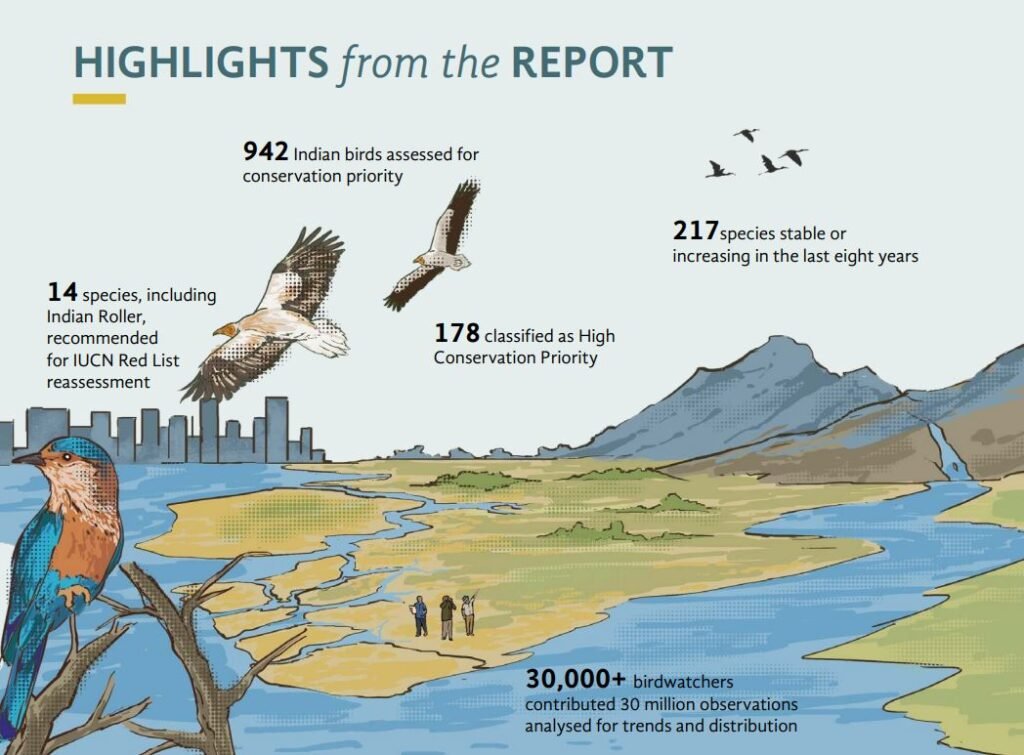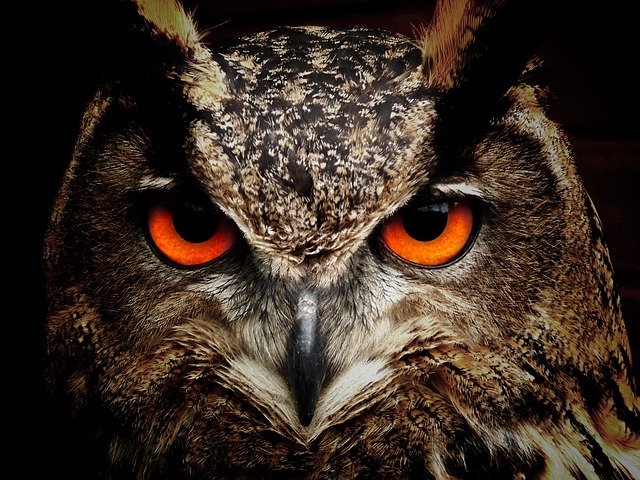In India, 60% of the bird species witness long-term declines. To put it in simpler terms, 204 species declined in their population over a 30-year period. Further, 98 species are more or less stable and 36 species show an increase. State of India’s Birds Report is an assessment of the distribution and population of major bird species found in India.

The ‘State of India’s Birds’ report is based on 30 million observations by 30,000 birdwatchers. While generalist species like the Indian peafowl are doing well, many others, including habitat specialists and raptors aren’t. The State of India’s Birds report is a periodic assessment of the distribution range, trends in abundance, and conservation status for most of the bird species that regularly occur in India.

A few gains, many losses
The overall outcome of these assessments largely reflects the global trend. Some generalist species are doing well, while many bird species show various degrees of decline. The International Union for Conservation of Nature IUCN Red List shows that 49% of bird species worldwide are declining in population, compared with only 6% increasing. In India, generalist species like feral Rock Pigeon, Ashy Prinia, Asian Koel and Indian Peafowl are doing very well. Other common species like the Baya Weaver and Pied Bushchat are relatively stable. But the larger picture is grim: 60% of species show long-term declines (out of 348 species that could be assessed for Long-term Trend). 40% of species are declining currently (out of 359 species assessed for Current Annual Trend). The declines are not spread uniformly across different types of species; examining differences across groups of species that share common characteristics reveals informative patterns.

The latest report is an update that considers a larger information base of more than 30 million field observations from over 30,000 birdwatchers and researchers across India. As a result, a greater number of species of birds have been assessed. The first version of the report was based on more than 10 million observations uploaded by 15,500 + bird watchers.
Report Highlights
- 942 Indian birds assessed for conservation priority
- 30,000 birdwatchers contributed 30 million observations analysed for trends and distribution
- 217 species stable or increasing in the last eight years
- 204 species declining in the past three decades
- 178 species classified as High Conservation Priority
- 14 species, including Indian Roller, recommended for IUCN Red List reassessment
- Asian Koel has increased in the past three decades
- Indian Peafowl continues to thrive
- Birds that live in key habitats like open ecosystems, rivers, and coasts have declined
- Raptors, migratory shorebirds, and ducks have declined the most
- Eight major threats to birds in India are synthesised
- Case studies from sites across India illustrate the vital role of systematic bird monitoring
- Policy and action must align to highlight species of high conservation priority, address problems of neglected habitats, and promote research and monitoring
Habitat specialists—particularly birds of grasslands and other open habitats, wetlands, and woodlands—are declining rapidly. In terms of diet, carnivores, insectivores, and granivores are declining more rapidly than omnivores or fruit- and nectar-eaters. Separately, migratory species appear to be under greater threat than non-migrants.

State of India’s Birds
India is home to over 1,350+ species of birds including endemic species such as White-bellied Treepie and Wayanad Laughingthrush which are endemic to the Western Ghats. Based on the availability of data, and significance in the Indian context, 942 bird species were considered to examine their conservation priority, distribution, and population trends.

Of the 338 species that had adequate data for assessing the long-term trends, 60% of the species had witnessed long-term declines. To put it in simpler terms, 204 species have seen a decline in their population in over 30 years period. Further, 98 species were more or less stable and 36 species showed an increase.
Current annual trends were analysed for 359 species out of which 40% were declining over the past eight years. Out of the 142 species witnessing a decline, 64 were witnessing a rapid decline. 189 species were more or less stable, and 28 species were increasing.
178 species of birds require immediate priority for conservation
The report identified that 178 species of birds needed immediate priority for conservation. Species of High Priority include those whose abundance indices have declined considerably in the long term and continue to decline today. Those birds whose abundance trend could not be assessed but are classified as ‘Globally Threatened’ in the IUCN Red List are also included in the category.







